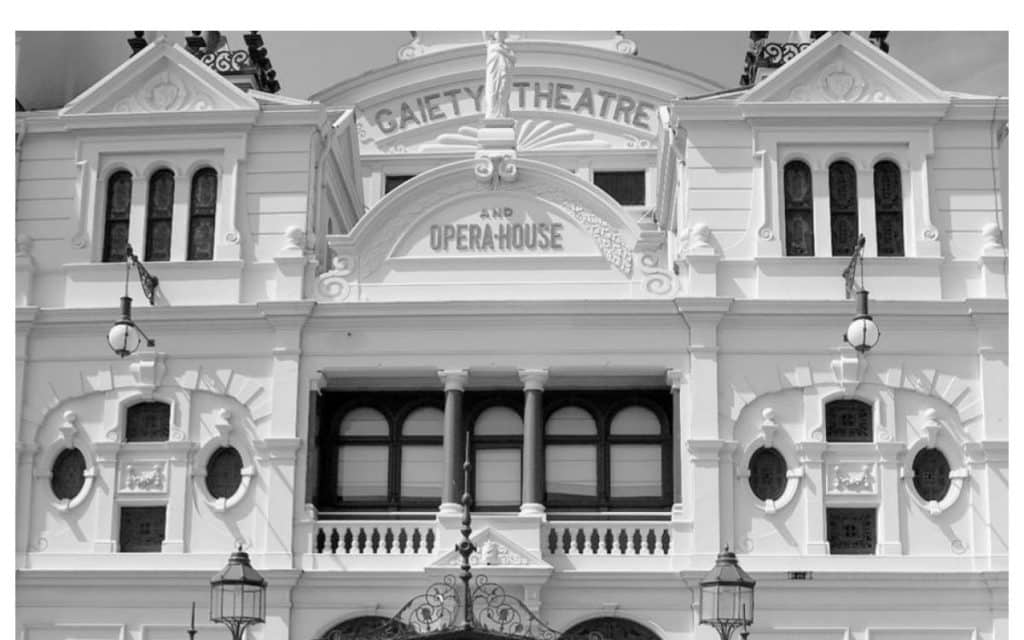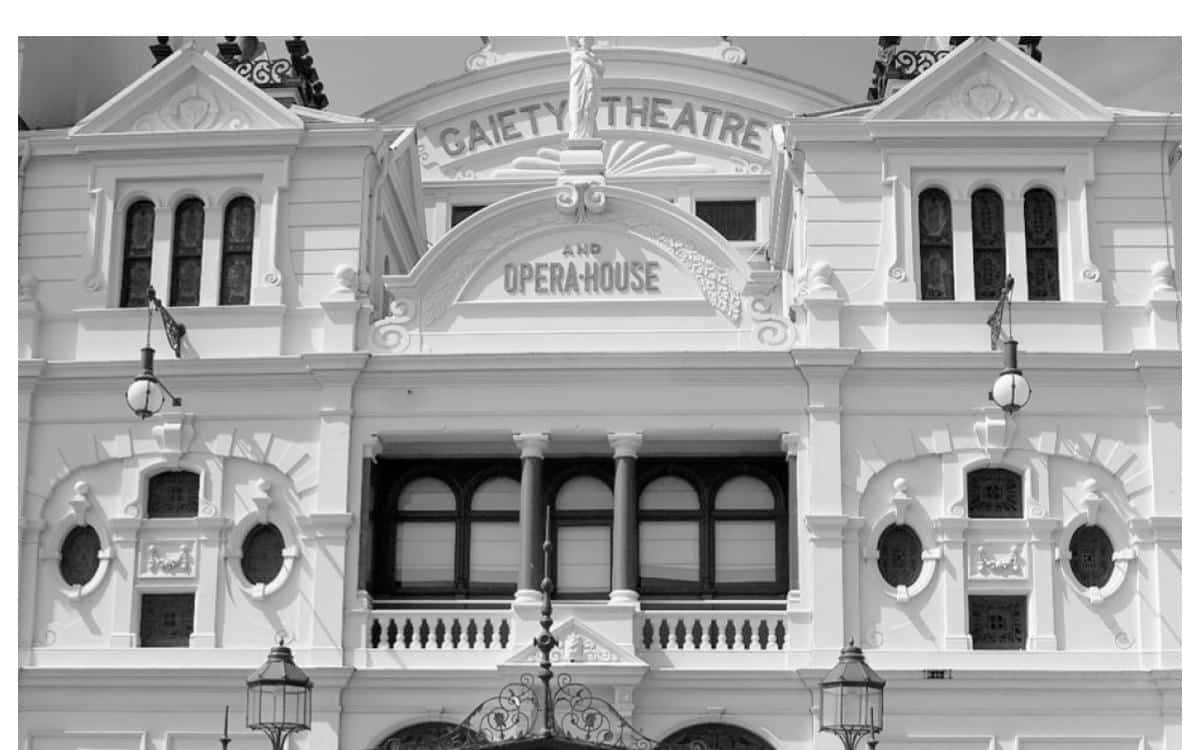RICK HALE looks at the history of hauntings of the Gaiety Theatre in Douglas, Isle of Man
Theatres, like hospitals and schools, play host to the entirety of the human condition.
Love/hate, joy/sadness and victory/defeat is all acted out nightly on the stage to the people occupying the seats.
Because of this, theatres often hold the energy of the past and the Isle of Man’s Gaiety Theatre is no different.
At the Gaiety, the ghosts upstage the actors and take centre stage.
History of the Gaiety Theatre
Unlike most haunted theatres in the United Kingdom with histories dating back centuries, the Gaiety Theatre in Douglas is a relative newcomer.
Along with the Villa Marina, the Villa Gaiety complex was designed by architect, Frank Matcham as both an opera house and theatre.
The building, which is considered his crowning achievement, was a welcome addition to the Isle of Man. People would never have to travel to the mainland again for the theatre.
During its first 14 years, the Villa Gaiety enjoyed a great deal of success. From its opening to 1914, the theatre entertained countless people.

Sadly, when England went to war with Germany in 1914, the citizens of the Isle of Man cared less about luxuries and focused more on winning the war and keeping their families safe. Attending a play was the last thing they thought about.
During the intervening years between World War I and World War II, theatre owners struggled to make a success of the theatre, but failed miserably.
The once grand theatre fell into disrepair and came close to being razed to the ground in 1970.
Thankfully in 1971, the Manx government purchased the building and began restoration in 1976.
No expense was spared in returning the Gaiety to its former glory. Original paint colours, wallpaper and carpeting was used to bring it back from the dead.
In 2000, the theatre celebrated its 100th anniversary by putting on a performance of “The Telephone Girl”. The theatre’s first production.
The theatre’s fortunes were once again looking good with people filling the seats for performances.
And it wasn’t only the living who took notice.
Haunting of the Gaiety Theatre
Since reopening its doors, it came to the attention of actors, stagehands and theatre goers, the Gaiety was very much haunted.
Prior to the renovations of the theatre, there was no talk of ghostly goings-on in the theatre.
Nevertheless, it would seem that 4 ghosts have taken up residence in the theatre. And they have no problem making themselves known.
The Woman in Black
The apparitions of women in various colours of dress has been a staple of English ghostlore since the earliest ghost stories were told, such as Susan Hill’s The Woman in Black.
The ghost of a woman in a black dress has been seen lurking in the theatre.
According to eyewitnesses, she stays mainly to the shadows and darkened stairwells.
On occasion, she has been known to emerge from her hiding place and give people quite a fright.
After staring someone down, she turns and walks through a wall ,vanishing from view.
The Man in Grey
As a spectral counterpart to the unnerving woman in black, we have the phantom known as the man in grey.
The man in grey is typically seen by actors and stagehands as they are putting up props or rehearsing.
He has been seen sitting in one of the boxes, as smoke from his cigarette swirls about him.
The man in grey watches for a few moments, then stands and vanishes from view. Leaving the scent of tobacco in the theatre.
B-14
A popular theory that is currently all the rage in the paranormal, objects have the capacity to he haunted.
If there is any truth to this widely held belief, seat B-14 may just prove it to be accurate.
The ghost of an elderly woman has been witnessed by various people sitting in seat B-14.
She is believed to be a woman who tragically lost her husband to the war and retreated to the theatre to give her peace and joy. And seat B-14, may have been her favourite seat.
Before fading away, she is seen gazing down at the stage, wrapped up in a performance only she can see.
A Helping Hand
Our fourth and final ghost at the Gaiety, is more felt than seen.
The ghost called, “helping hands” is known to guide people through the darkened recesses of the theatre. Or helps stagehands find missing props and equipment.
Whomever this ghost is, appears to give actors the most help. A number of actors who missed their cues have reported feeling a large, but gentle, hand on their shoulder. Feeling encouraged they are able to proceed.
The kindly spirit is considered to be a protector and a calming influence on actors who may feel the flutter of butterflies in their stomach. He’s considered a valued member of the Gaiety family.
The Villa Gaiety in the city of Douglas, is considered an important part of life on the Isle of Man. Not only does it offer quality entertainment, it also has become a favourite destination of ghost hunters from across the United kingdom.



